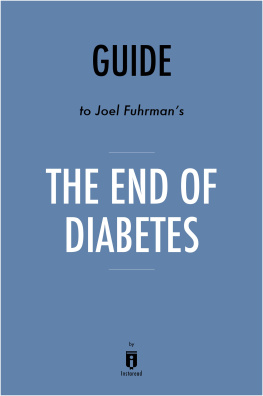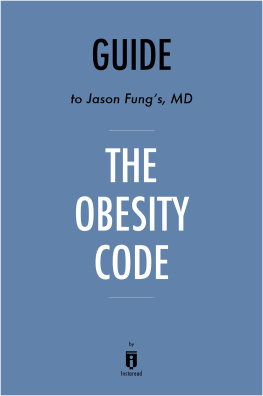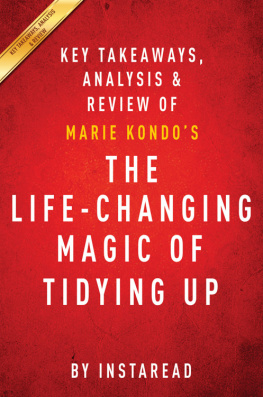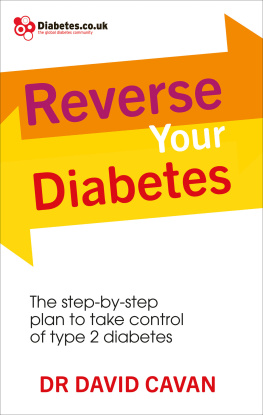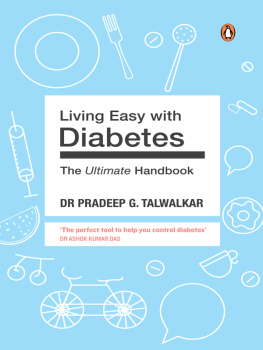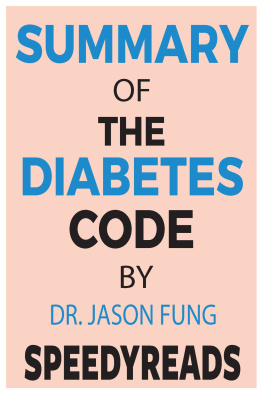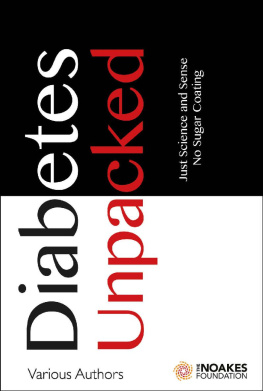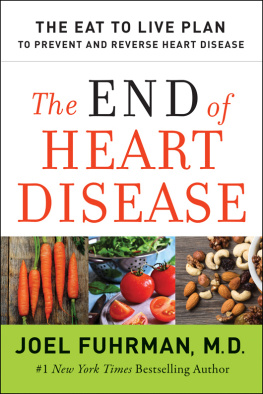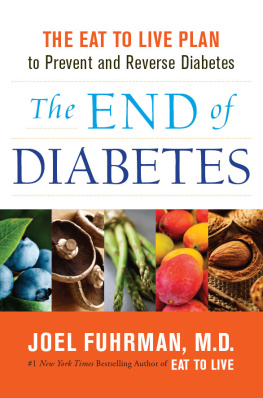Guide to
Joel Fuhrmans, MD
The End of Diabetes
The Eat to Live Plan to Prevent and Reverse Diabetes
by
Instaread
Please Note
This is a companion to the original book.
Copyright 2016 by Instaread. All rights reserved worldwide. No part of this publication may be reproduced or transmitted in any form without the prior written consent of the publisher.
Limit of Liability/Disclaimer of Warranty: The publisher and author make no representations or warranties with respect to the accuracy or completeness of these contents and disclaim all warranties such as warranties of fitness for a particular purpose. The author or publisher is not liable for any damages whatsoever. The fact that an individual or organization is referred to in this document as a citation or source of information does not imply that the author or publisher endorses the information that the individual or organization provided. This concise companion is unofficial and is not authorized, approved, licensed, or endorsed by the original books author or publisher.
Table of Contents
Overview
First published in 2012, The End of Diabetes:The Eat to Live Plan to Prevent and Reverse Diabetes is an argument for diabetics and health care professionals to change their perspective on conventional treatments of diabetes to instead prioritize healthy diet and lifestyle changes for improved outcomes. By following the practical steps and the meal plan recipes that author Joel Fuhrman describes, type 1 diabetics can reduce their insulin dependence and type 2 diabetics can defeat their disease altogether, ending their reliance on insulin and other medications entirely.
Every year, the population of diabetics in the United States grows. In large part, this concerning and costly trend can be prevented and even reversed. By 2012, approximately 90 percent of American diabetics had type 2 diabetes, the form of the illness that is almost universally brought on by obesity and poor nutrition. For Americans who have yet to develop type 2 diabetes, it is essential to abandon the traditional Western diet in favor of a nutrient-dense nutritarian diet that is low in sugar and animal proteins and high in whole fruits, vegetables, beans, nuts, and seeds. For those who already suffer from type 2 diabetes, a healthy lifestyle and a nutritarian diet can mean beating the disease instead of simply managing it with insulin and other medications.
Type 1 diabetes is not preventable and can be a lifelong challenge that causes secondary, potentially life-threatening illnesses. For type 1 diabetics, some insulin dependence will always be necessary. However, by following the prescribed nutritarian diet, they can lower their daily insulin dosage requirements and achieve better health outcomes and even longer lifespans.
In both cases, diabetics are largely being underserved by the medical community. Most physicians fail to provide proper dietary guidance and often are quick to prescribe increased insulin doses to patients. This worsens their illness and accelerates their weight gain. Instead, physicians should work with patients to find a lifestyle-based solution that can eliminate or at least reduce their reliance on medication.
Important People
Joel Fuhrman is the author of The End of Diabetes, originally published in 2012. He is a family physician and the author of several other bestsellers on health and nutrition, including Eat to Live: The Amazing Nutrient-Rich Program for Fast and Sustained Weight Loss (2003), The End of Dieting: How to Live for Life (2014), and The End of Heart Disease: The Eat to Live Plan to Prevent and Reverse Heart Disease (2016). He advocates a nutrient-dense diet as a means to eradicate illness and achieve personal health.
Key Insights
- The epidemic of type 2 diabetes in the United States wasnt unavoidableand it can be fixed.
- Type 1 diabetes is not avoidable but can be better controlled for improved outcomes with the correct type of diet and exercise regime.
- Diabetes is costing the United States billions of dollars annually.
- The American diet is not healthy for anyone, but it is especially dangerous to diabetics.
- The conventional guidance given to diabetics by most physicians and the American Diabetes Association (ADA) is flawed and even dangerous.
- A nutritarian diet promotes a long and healthy life for diabetics.
- The nutritarian diet focuses on limiting animal protein and maximizing the amount of greens, nuts, and seeds consumed daily.
- The most important change to make in attempting to beat diabetes is to commit to a full lifestyle overhaulnot just a diet.
Analysis
Key Insight 1
The epidemic of type 2 diabetes in the United States wasnt unavoidableand it can be fixed.
Analysis
Since the start of the new millennium, the number of diabetics in the United States has more than doubled. Diabetes afflicted 10.9 million people in 1999, a figure that had increased to 22 million in 2014. [1] This has occurred as the American obesity epidemic has also gotten out of hand. In fact, seven out of the top 10 states with the highest diabetic populations were also in the top 10 for highest obesity rates. [2]
This correlation between type 2 diabetes and poor nutrition strongly suggests that this disease is entirely preventable and often reversible through weight loss, improved nutrition, and eventually a reduction in insulin dependence.
Key Insight 2
Type 1 diabetes is not avoidable but can be better controlled for improved outcomes with the correct type of diet and exercise regime.
Analysis
Only about one in 10 diabetics have type 1 diabetes, which usually presents in childhood and is not triggered by poor diet. These people will always need to monitor and manage their insulin. However, by following a nutritarian diet, they can lower their insulin dependence and prevent the development of other ailments and diseases in addition to their type 1 diabetes.
The exact cause of type 1 diabetes is unknown. However, the progression of illness as a type 1 diabetic is not a foregone conclusion. Lifestyle choices can have a major impact on patient outcomes and prevent the development of additional ailments. A recent study from Poland found that physical exercise can increase patient insulin sensitivity leading to improved outcomes for patients with type 1 diabetes. Exercise by these patients also helped reduce stress and prevent depression. Both of these consequences of exercise also increase patient insulin sensitivity, which demonstrates that even type 1 diabetes can be better managed with lifestyle measures outside of additional medications. [3]
Key Insight 3
Diabetes is costing the United States billions of dollars annually.
Analysis
Some 20 percent of US health care costs currently involve treating people with diabetes. Every year, average health care spending on a diabetic American is more than double the costs incurred by a person without the disease. The American economy is weakened by absenteeism, lost productivity, and inability to join the workforce caused by diabetes. Researchers estimate that diabetes costs the US economy $68 billion in diminished productivity each year. But the patients themselves feel the pain in their own wallets as well. On average, a patient with diabetes incurs annual medical costs of around $13,700. That number is more than double what the same person would pay per year in the absence of diabetes. [4]
If current trends continue, diabetes and prediabetes patients will make up the largest segment of health care spending in the United States by the year 2020. By reversing, preventing, or eliminating diabetes through lifestyle changes, these costsboth to the individual patient and to the nations health care systemcan be avoided.
Next page
